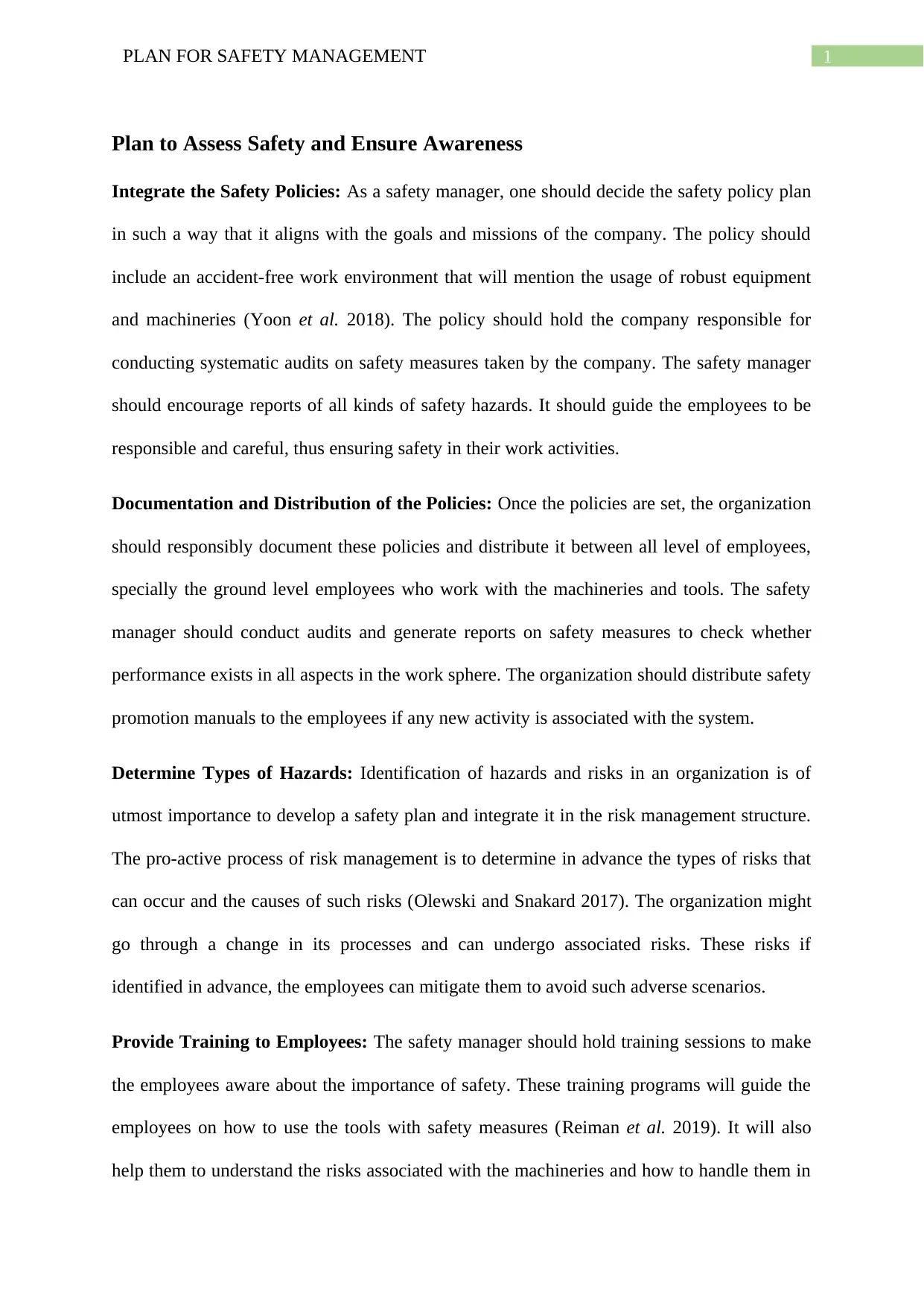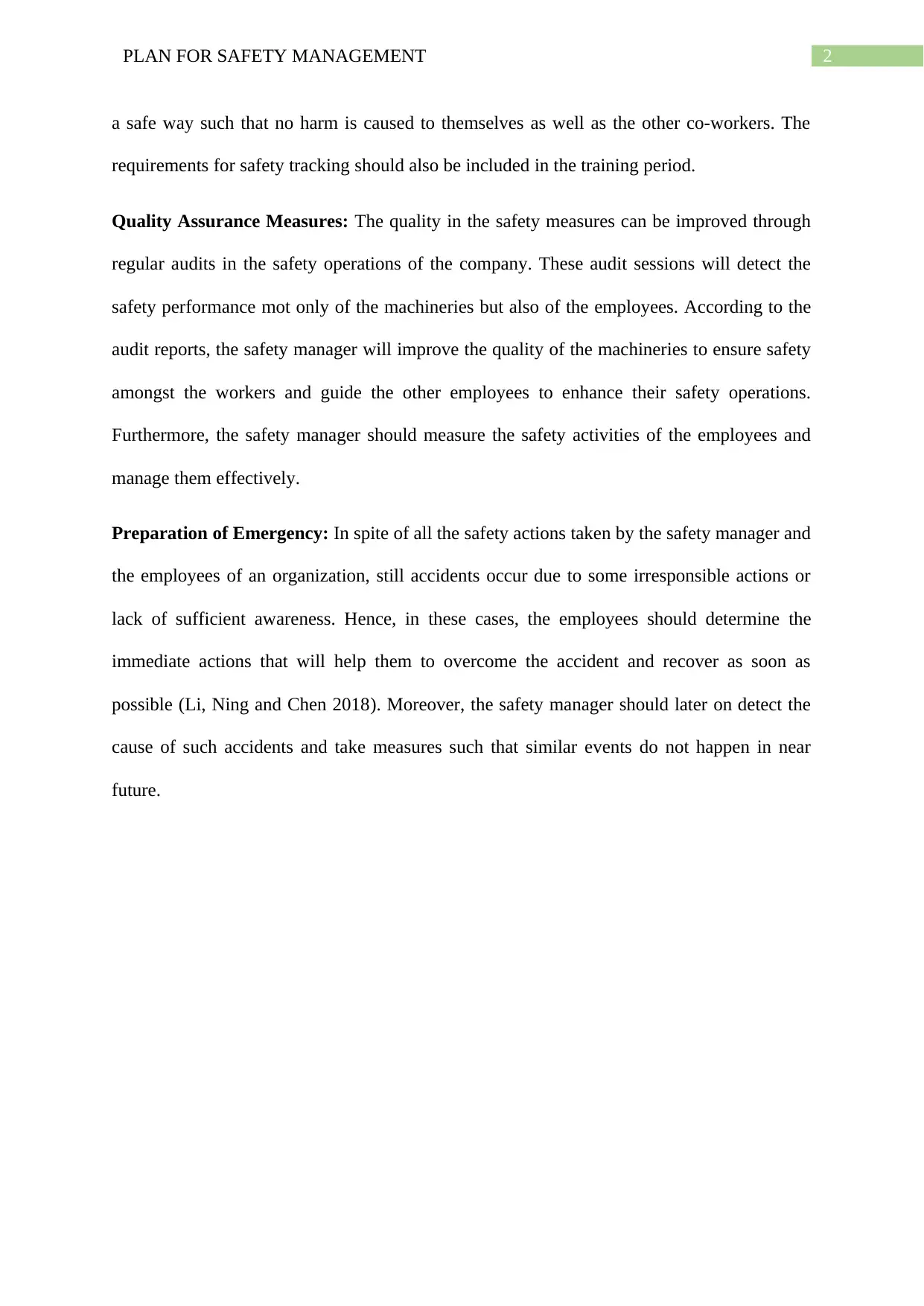Safety Management Plan Report: Assessment and Implementation
VerifiedAdded on 2022/09/13
|4
|801
|15
Report
AI Summary
This report outlines a comprehensive safety management plan, emphasizing the integration of safety policies, documentation and distribution of these policies to all levels of employees, and hazard identification. It stresses the importance of providing thorough employee training on safety measures, including the proper use of tools and risk management. The report highlights the significance of quality assurance through regular audits to assess safety performance and the need for effective emergency preparedness plans to mitigate the impact of accidents. The plan also covers measuring employee safety activities and managing them effectively. The document references several research papers to support the strategies and recommendations provided, offering a practical approach to ensuring a safe and secure work environment.
1 out of 4










![[object Object]](/_next/static/media/star-bottom.7253800d.svg)